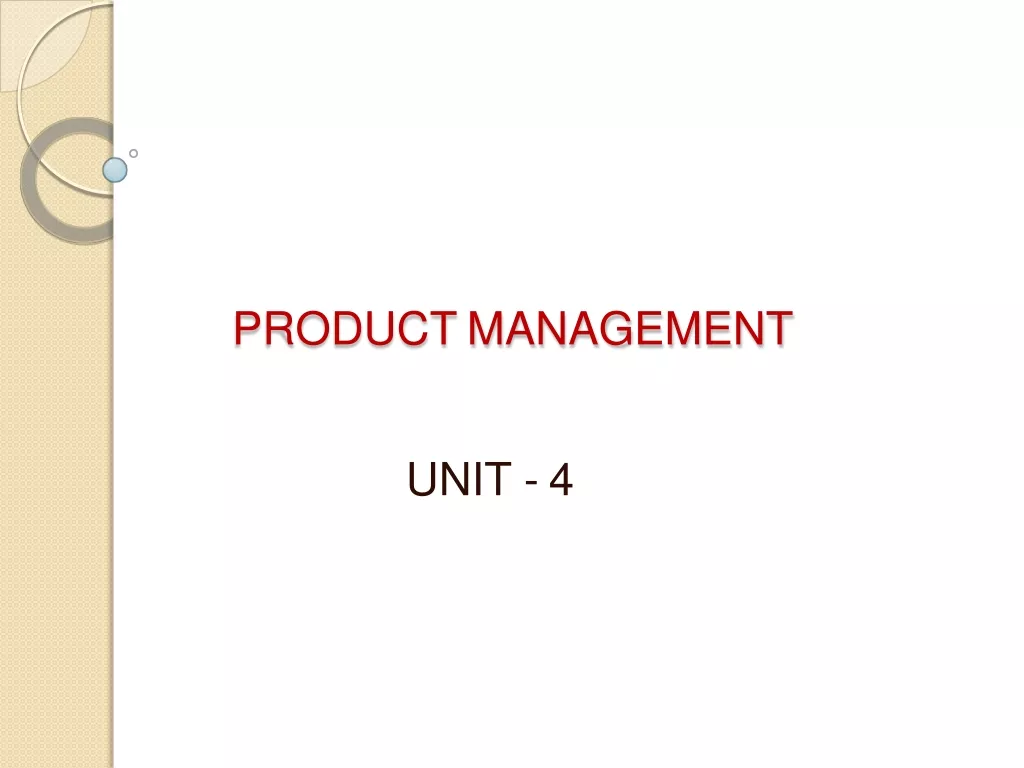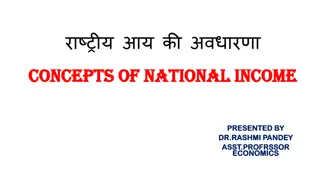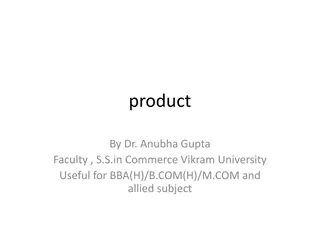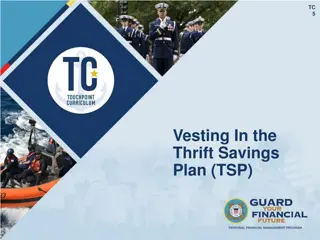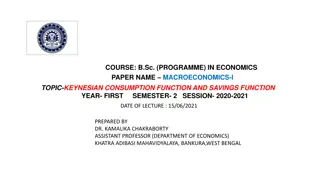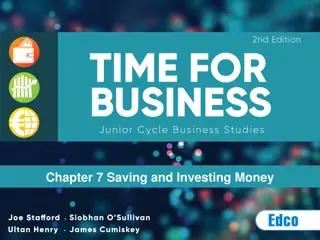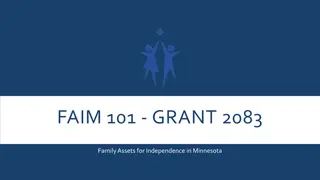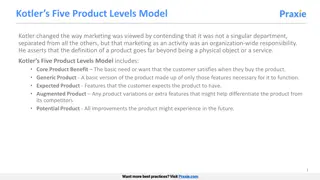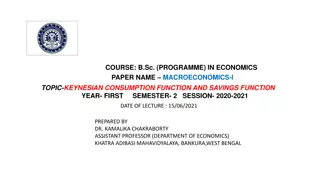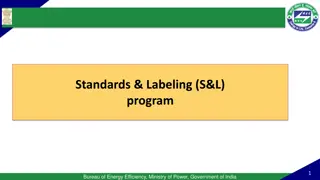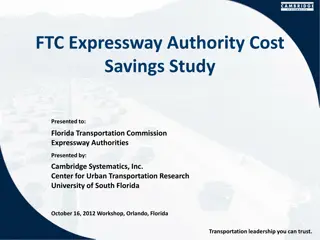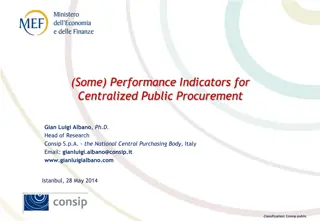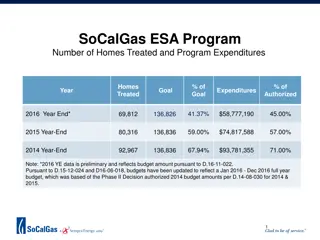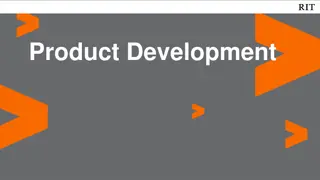
Effective Strategies for Savings Mobilization in Cooperative Financial Institutions
Learn about the importance of savings mobilization for Cooperative Financial Institutions (CFIs) in South Africa. Discover key strategies to increase savings, build capital reserves, and compete in the financial market to enhance the success of CFIs.
Download Presentation

Please find below an Image/Link to download the presentation.
The content on the website is provided AS IS for your information and personal use only. It may not be sold, licensed, or shared on other websites without obtaining consent from the author. If you encounter any issues during the download, it is possible that the publisher has removed the file from their server.
You are allowed to download the files provided on this website for personal or commercial use, subject to the condition that they are used lawfully. All files are the property of their respective owners.
The content on the website is provided AS IS for your information and personal use only. It may not be sold, licensed, or shared on other websites without obtaining consent from the author.
E N D
Presentation Transcript
March 15th -17th 2021 INDABA WORKSHOP SOUTH AFRICA Discussion Topic: Product Development
TWO POINTS OF FOCUS Linking Credit and Savings Increasing access increases savings
INTRODUCTION Cooperative financial institutions (CFIs) are a major alternative source of finance to people with low-income levels. A key source of loanable funds in CFIs is savings. Saving mobilization strategies is therefore key to the success of all CFIs. It is important to note that: Savings is a painful process to most people. It involves a sacrifice of present consumption for a future good. Many people would prefer to have present consumption than to save for the uncertain future, may be to leave that responsibility to their children or to the government. Demands are always higher than incomes, irrespective of your income. Saving must be a deliberate choice one has to make.
Importance of savings at CFI member level At the CFI level, building up savings includes setting aside reserves out of profit to build capital. Most CFIs don t have adequate capital to take care of risks. Well capitalized (institutional savings) can withstand any emerging risks and shocks and so at personal member level. Regulators set up in law, minimum compliance capital for licensing and an annual amount transferred to statutory reserves because savings is difficult evenat the CFI level. These are like forced savings.
SAVING MOBILIZATION OPTIONS FOR CFIs Savings is the major single source of loanable funds to the CFIs. They must mobilize and build adequate savings for on-lending to members. This explains why a newly formed CFI (3 -6 months in most countries) would take some period of time before they start lending. You can t have an aggressive lending policy when you don t have an aggressive saving mobilization policy that works. You are better off with fewer loan products but which you can be effectively serviced from the available funds. In so doing; CFIs must take a deliberate effort to mobilize savings from its members. Saving mobilization must form part of a work plan and strategy for a CFI It involves product development of saving products It involves setting targets over the planned period
SAVING MOBILIZATION OPTIONS FOR CFIS It involves evaluating whether the saving targets are being realized and whether there is need to review, abandon and change to a strategy that can work. It may involve a cost to mobilize additional savings- marketing, branding, staffing. You must market saving products for awareness and value proposition. Remember your marketing channels-delegates and member forums and meetings, radios You must be aware that there exist other competitors for similar savings; commercial banks, microfinance institutions and other investors. The competitors not only exist, but work towards better strategies to mobilize savings to outmaneuver your strategy.
WHAT OPTIONS? Each CFI is unique and could have different saving mobilization strategies: 1. Have competitive but realistic interest rates on deposits. Introduce term deposits with different interest rates (3 months, 6months, 12 months, 2 years). Ensure you lend TERM DEPOSITS on those loan products with similar repayment periods to avoid a liquidity mis-match. 2. Encourage long term savings that can finance long term loans to your members such as lifetime savings. They are only withdrawn when amember withdraws or resigns from the CFI. They enable good planning and liquidity stability. 3. Develop diverse savings products that targets the diversity of all your members needs; The youth, they save to get credit to meet their youthful needs Women, they save to get credit to serve their specific unique social and economic needs Farmers, traders, transporters Retirees and pensioners Group scheme members and others
WHAT OPTIONS? 4. Introduce incentive scheme for members to save; Dividend capitalization. Request your members to capitalize their dividends with an incentive Reward your highest top 10 savers during your annual general meeting, certificate, purchasing vouchers. This will trigger internal competition on savings 5. Open your common bond of membership and attract members far and beyond. Amend your bylaw to allow you recruit additional members outside your normal area and clout of operation. 6. Encourage your CFI to merge with one or two other CFIs and focus on the volume and economies of scale that comes with numbers. 7. Play around with members minimum saving balances. You can have an increase on minimum savings balance to boost your savings portfolio (if you already have more members) or you can lower the minimum savings balance if you need more members to join the CFI.
WHAT OPTIONS? 8. Open a CFI branch in an area with high concentration of potential members and savers. This strategy must be justified with a proper feasibility study as a new CFI branch means more than just a saving mobilization. 9. Develop a personal relationship with your highest savers. They have a potential to contribute additional more savings or they may withdraw their savings and upset the savings portfolio. Assign a particular staff to handle them (the case for KUSCCO, Kenya). 10. Introduce loan schemes with a saving component, usually referred to as a welcome loan for new members. In this case a member shall be advance a loan BUT part of the loan cash is retained as his savings. The member shall have built an instant huge saving. Common with CFIs with stable liquidity.
STRUCTURES FOR GOOD SAVING MOBILIZATION The success of a good CFI savings strategy depends on the perception of the member on the safety of their deposits. No member will save in a CFI if it is perceived to be a risk to member funds. Thus; 1. Effective regulation and supervision by an independent regulator. In addition to the role played by the internal auditor and external auditors, the CFI regulatory authority must ensure an effective regulatory supervision and compliance that assures CFI members that the institution is safe and forever safe. The reason for offsite and onsite supervision The reason for the licensing due process The reasons for administrative actions for non-compliance
STRUCTURES FOR GOOD SAVING MOBILIZATION 2. Demonstration of good governance practices. The board of directors and staff must demonstrate ability to effectively play their roles and competently manage the CFI to the satisfaction of members and stakeholders. 3. Effective policies and procedures that guarantees controls and set limits of power. 4. For employee based CFIs, CBDA and the national association should fastract the government support to provide deduction codes at the employer payroll level like in the case of commercial banks and insurance companies 5. Management information system that can support online saving mobilization strategies.
CONCLUSION The core business of a CFI is savings mobilization and lending to members. The strategy must therefore strongly focus on these two areas. Behind the back of this strategy is the guarantee to the members that their funds are safe and forever. These safety measures are the responsibility of the regulator, the board of directors and the staff of the CFI.



